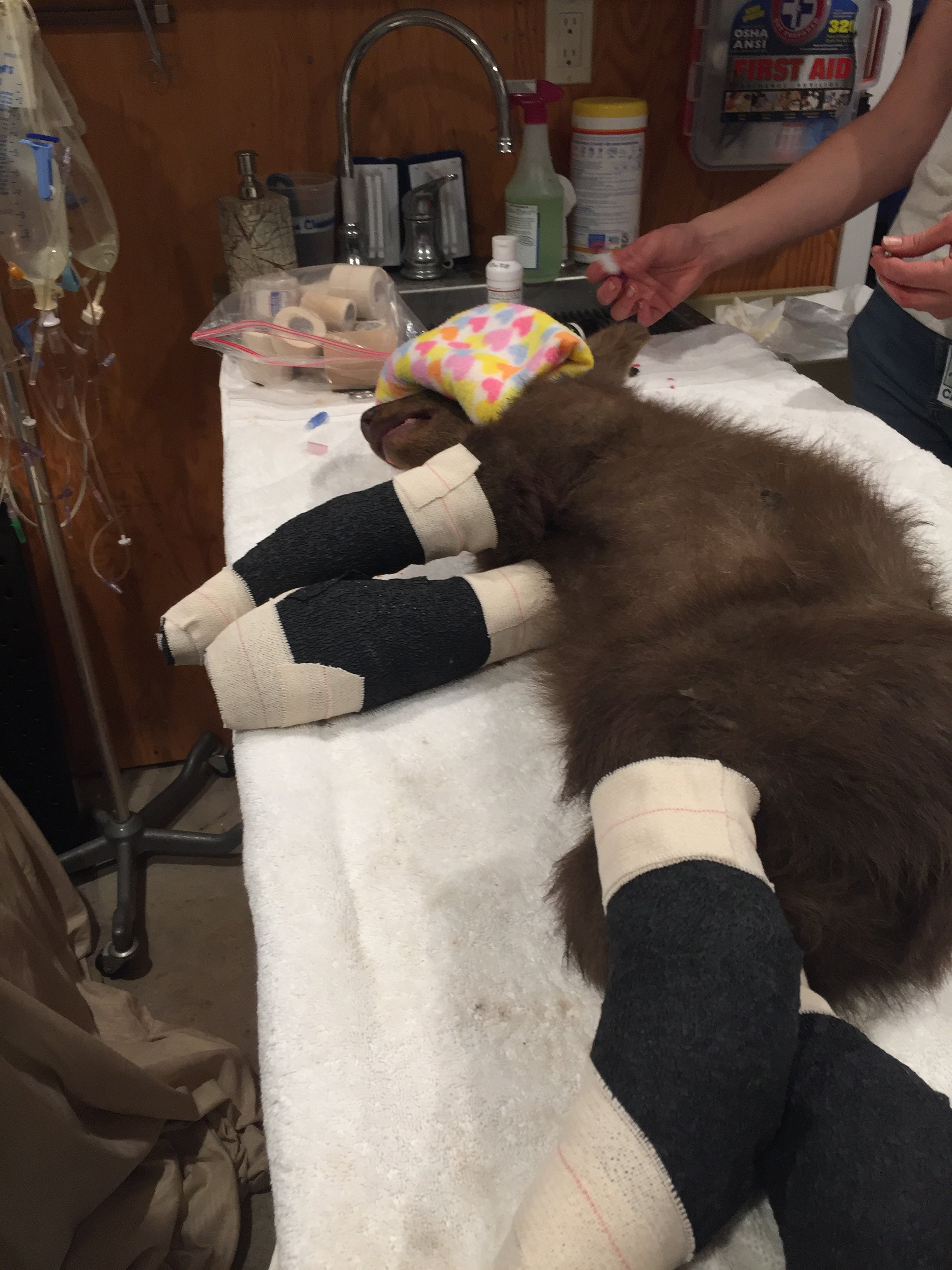Bear cub rescued from California wildfire
Lake Tahoe Wildlife Care told The Independent that the cub’s mother has not been located

Your support helps us to tell the story
From reproductive rights to climate change to Big Tech, The Independent is on the ground when the story is developing. Whether it's investigating the financials of Elon Musk's pro-Trump PAC or producing our latest documentary, 'The A Word', which shines a light on the American women fighting for reproductive rights, we know how important it is to parse out the facts from the messaging.
At such a critical moment in US history, we need reporters on the ground. Your donation allows us to keep sending journalists to speak to both sides of the story.
The Independent is trusted by Americans across the entire political spectrum. And unlike many other quality news outlets, we choose not to lock Americans out of our reporting and analysis with paywalls. We believe quality journalism should be available to everyone, paid for by those who can afford it.
Your support makes all the difference.A black bear cub rescued from the Tamarack wildfire is recovering in a California animal sanctuary as caretakers prepared him on Tuesday for further treatments.
The cub, believed to be about six months old, has been named “Tamarack” after the area in which he was found on Sunday in Markleeville.
He was found by homeowners who had been allowed to return to their property in a restricted fire zone, said Greg Erfani, a board member and spokesman for Lake Tahoe Wildlife Care, which is currently looking after Tamarack.
“We don’t know where the mom is,” Mr Erfani told The Independent. “Mothers in any species protect their young, so our feeling is that the fire was getting close – because obviously the cub had burns – and she put him in a safe place and probably returned to either find another cub or is looking for safety, where to take him.”
He added: “This mom was so lucky, because it is a fire-restricted area, and these were the only people given permission to return to their homes ... Nobody would have seen him, because it’s pitch black there. It’s totally dark, because there’s no electricity. This little guy, man – the mom took care of her baby.”
According to the US Forest Service, the Tamarack fire was ignited on 16 July by a lightning strike and has burned more than 68,000 acres across California and Nevada, prompting multiple evacuation orders. As of Monday, the fire was 54 per cent contained and evacuation notices have begun to be lifted.
The cub weighs 21 pounds and was dehydrated when he was discovered. But his prognosis is good and he is scheduled to undergo further treatments for his severe burns, while getting used to his unfamiliar surroundings, Mr Erfani said.
“He’s resting fine this morning,” he said. “We have alleviated some discomfort, but if you’ve ever burned yourself, you know how that feels – just think at the bottom of your feet.
“We have wrapped his paws in manuka honey, which does have healing properties and also will be some pain relief. We’re going to do a tilapia skin graft next week.”

The graft, he said, will be done by Dr Jamie Peyton, veterinarian and associate director of the Center for Advancing Pain Relief at UC Davis.
“She has really, in the US, kind of pioneered or progressed this use of tilapia skin when animals have burns,” Mr. Erfani said, adding that there are “properties in this fish skin that help skin regenerate quickly and strongly. That’s why the tilapia skin, it’s a huge breakthrough for us”.
Tamarack is being kept in isolation as much as possible to protect him from disease and calm him, and the plan is to eventually return him to his natural habitat, Mr Erfani said.
“I’m sure it’s a little weird sensation to him, the fact his paws are wrapped,” he said. “It will probably take him a couple of weeks, and then he’ll get used to us, and then we’re going to teach him how to be a bear – and hopefully, within a year, we’re going to release him into the wild.”

In the meantime, Mr Erfani emphasized that animals are equally affected by disasters such as wildfires and people must remember to be “bear aware.”
“What we want people to wake up to is, we share the planet. There’s animals, and humans, we need to learn to coexist,” he said. “If you see a baby bear alone, don’t necessarily touch it; watch it for a couple of days, because mom bears do put their babies up trees. They put them in kind of isolated places, because they feel they’re safe – and the mom will go get food, and then they’ll come back.”
He added: “Remember that wildlife is out there. When you drive in mountain roads, slow down.”
In a case such as Tamarack’s, however, “his burns are so bad that he wouldn’t have survived in the wild – so no matter what, we would have had to rescue him”.

Join our commenting forum
Join thought-provoking conversations, follow other Independent readers and see their replies
Comments